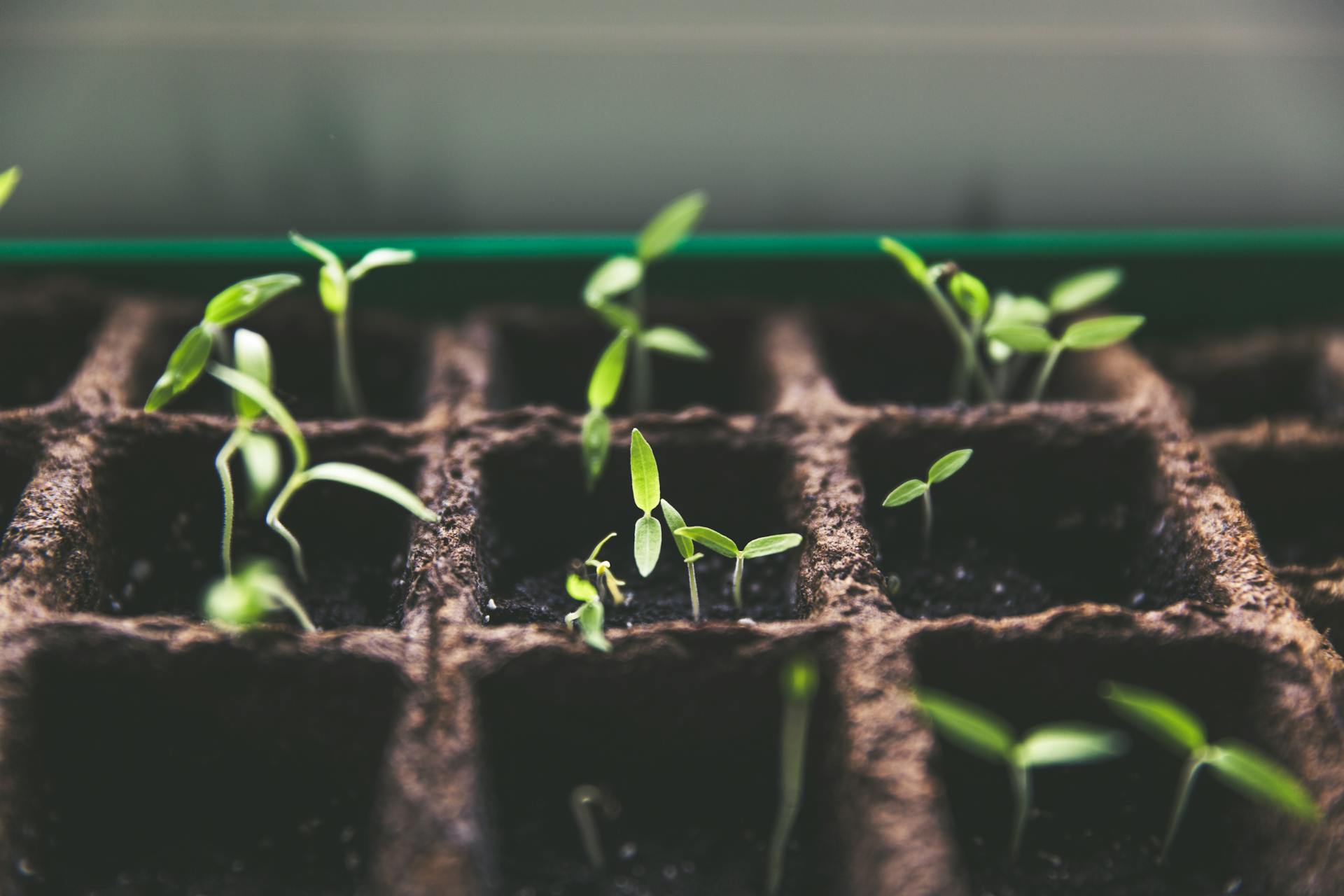The soil isn’t some dirt. It’s what gives plants soil their life, by nourishing and supporting them. The correct approach to gardening and agriculture is possible only with the knowledge of the complex relationship that exists between plants and soil. Let’s go even deeper into what role does root system of plants play in maintaining life.
The Foundation of Growth: Healthy Soil Is Needed by Plants
Healthy soil is the basis for good plant life by being an air, water, and nutrients reservoir. Without healthy soil, plants can barely set down their roots and absorb the essential ingredients that are needed for their development and photosynthesis.
Nutrient-Rich Soil: A Bounty for Plant Growth
Nutrient-rich soil, which is full of organic matter, becomes a blessing for plants, as it allows a wide range of important elements needed for growth like nitrogen, phosphorus, and potassium. These nutrients function as central agents to accelerating several biochemical processes thus benefiting plant growth and development significantly.
The Dynamic Exchange: The Connection Between Plants And Soil
Plants’ roots and soil enter a process of symbiotic exchange. In turn, root hair gives back to soil microbes by releasing organic matter that is broken down by these microorganisms into simple nutrients that are available for plant uptake.
Optimal Soil pH: A Location Determinant for Plant Health
The soil pH, which indicates its acidity or alkalinity, notwithstanding, has such control over plant nutrient availability as well as their overall health. Ensuring that the required pH is maintained ensures that these nutrients stay as soluble ions in soil solution, thus plants soil can readily absorb their nutrient needs.
Plants Soil Structure: The arches serve as support for plant roots
Soil architecture is crucial for plants; it controls the growth of roots, moisture infiltration, and air supply. Well-aerated soils with good drainage enhance root growth, thus avoiding water logging and suffocation of roots.
Symbiotic Relationships: Plants and beneficial microbes in the soil
A vibrant community of soil microbes is hidden under the surface level of the plants. They have a mutual relationship with plants’ soil that helps in cycling nutrients, suppressing diseases, and improving the fertility of soil. They are microscopic beings that function as allies to maintain the health of the soil and support plant vigor.
Soil Erosion: This is a serious problem for The plants’ habitat
Soil erosion is often recognized as one of the major problems that causes the loss of plant soil, shaving off valuable topsoil and uncovering roots to the stresses coming from the environment. Integrating preventive methods like cover cropping and contour plowing is key to the protection of plants’ soil mass.
Composting:
Nature invented composting as a method of recycling organic matter, thus improving the soil with a plant nutrient mixture which is humus. When gardeners are composting their kitchen scraps, yard waste, and other organic matter these are returned to the soil to bring back fertility and improve its structure as well.
- It Is Soil We Need to Nurture So that the Plants soil Able to Thrive Usually
Mulching: Protecting Plants’ Soils from Any Detrimental Effects
Mulching as a layer over plants’ soil also serves as a regulator of temperature, conservation of moisture, and in weeds suppressing growth. Matter of organic origin like straw, leaves, and grass clippings undergo decomposition eventually adding to the prior enrichment of the soil.
Soil Testing: A Tool That Diagnoses Plants’ Health
Soil testing is an important approach required for the determination of plants’ soil fertility levels to detect any nutrient deficiencies or imbalances. This information at hand allows growers to adjust the fertilizer application to fit each plant’s requirements, letting them achieve maximum growth and productivity.
Crop Rotation: Soil’s Alive: Maintaining plant vigor
Crop rotation is an old farming practice that keeps plant fertility of the soil and inhibits pest and disease buildup in the ecosystem. In a sense, farmers achieve soil balance by rotating crops that require different nutrition throughout successive seasons of growing.
No-Till Farming: Shielding the plants’ soil structure
No-till farming involves leaving the soil undisturbed by abandoning plowing which results in the preservation of the plant’s natural habitat and minimizing erosion. This kind of conservation practice develops soil health, diversity and while lowering the carbon emission of tillage.
Permaculture: Establishing Symbiotic Relationship Between Plants with Their Soil
The tenets of permaculture inform agroecological systems that are designed to be self-sustaining and aligned to the way nature operates, providing an environment that promotes the interdependence of plants, soil, and environment. Permaculture works by including many species of plants soil and regenerative practices to build thriving soils that are ready to give produce.
Green Manure: Revitalizing Plants’s Soil Naturally
The crops of green manure, for example, legumes and clover, are the crops grown to hold the soil fertility and the soil structure of the plant’s Soil. These herbaceous plants’ soil captures nitrogen from the air, inhibits weeds, and when plowed over, contributes organic matter to the soil, which then becomes ready for the next plantation.
Soil Conservation: Recognizing that the plants’ soil is an asset for future generations
Effective conservation of soils is critical in limiting soil deterioration and ensuring a sustainable future. Adoption of such practices as terracing, contour farming, and agroforestry are key measures for the mitigation of soil erosion and its fertility.
Urban Gardening: Growing Crops on Soil in Bounded Corners
Urban home-growing aficionados are in favor of container gardening and raised beds for growing plants and soil in confined urban spaces. The application of compost, vermicompost, and organic fertilizers will nourish the soils in urban gardens to create soils that are good for plant growth and productivity.
Soil Rehabilitation
In such degraded landscapes, destructive forces exert pressures on plants, and soil rehabilitation aims at restoring plants’ soil health through soil remediation which is achieved using techniques like phytoremediation and soil stabilization. They work on remediating contaminated soils and greening up ecosystems, thus directing the course of land use toward sustainability.
The significance of the pH of the soil to plant health
The soil pH makes an important difference in plant nutrient availability. The plant’s soil will do well in different pH levels as some generally do well with acidic soils and others with alkaline soils. Monitoring and correcting the soil pH if required will thus allow for the optimization of the nutrient uptake and the overall health of the plants, thus, making the plant’s soil acquire the vital elements that they need to grow strong and develop healthily.
Managing Soil Water Regulation for Greater Plant Productivity
It is critical to hold adequate soil moisture to enable plants’ soil to absorb water and nutrients properly because it impacts plants’ soil uptake of water and minerals. Excessive water can cause oversaturated soil and root asphyxiation, whereas lack of water causes drought stress and impacts negatively on plant growth. The use of adequate irrigation techniques, which could be drip irrigation or soaker hoses, to improve soil moisture levels and enhance plant growth, is important for healthy crop development.
Texture of Soil: Why It Matters for Plant Growth
The texture of the soil, which is created by the proportionality of sand, silt, and clay, strongly impacts plant development and soil productivity. Sandy soils drain fast but could be barren on nutrients, whereas clay soils could retain water resulting in compaction. Loamy soils, composed of a well-balanced blend of sand, silt, and clay, offer the best development environment for roots and also provide maximum nutrient retention, which leads to plant health.
Conclusion
Plant soil is more than foam for roots; it is a living ecosystem that sustains life on its surface and underground. An effective way to enhance the health of soil is by focusing on composting, mulching, and conservation of soil. This will lead to the sustenance of rich harvests and the survival of our ecosystems for years to come. Let’s continue respecting and treating this precious resource as a valuable tool of the plant’s ancient and modern prosperity.
FAQs
What is plants’ soil?
- The medium for growing plants for plants soil are the plant’s soils which consist of mineral particles, organic matter, water, air, and microorganisms naturally.
Why is the soil significant for plants?
- Soil, the most indispensable nutrient source, holds the water, and provides support and anchorage for the plant roots, thus enabling their growth, development, and overall vigor.
What to do with the soil to increase plant growth?
- You can practice better soil management for plants soil by adding organic matter through composting, mulching, and the incorporation of cover crops which can enhance the fertility as well as the structure of the soil.
What is soil erosion, and how does it affect the plants?
- Soil erosion occurs by way of water, wind, or human actions and this can cause deterioration of the plant’s roots, low soil quality, and even land degradation.
How often do I need to take soil samples from the roots of plants?
- Testing plants’ soil at least once a year is advisable to determine its nutrient level, pH, and overall well-being to know the fertilizer application and soil management practices to be made in that regard.


